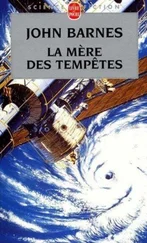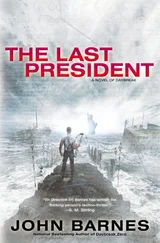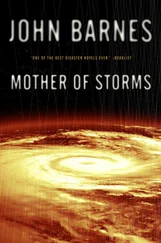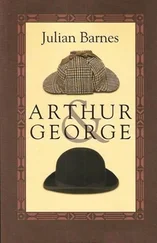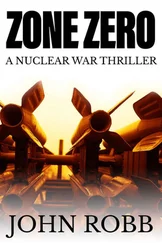ABOUT AN HOUR LATER. MOTA ELLIPTICA, TEXAS (WEST TEXAS RESEARCH CENTER). 11:30 PM CST. WEDNESDAY, JULY 9, 2025.
The planning room looked like a parlor commandeered by a Civil War general, the night before a battle. Golden light flickered from oil lamps, and the men and women stood around the big tables covered with maps and charts, or traced lines with yardsticks and string on the carefully hand-drawn charts on the walls.
Arnie Yang rested his eyes on the tacked-together sheets of graph paper covering much of the north wall, no longer really seeing the huge graph. He could have drawn it in his sleep; the horizontal axis was Transmission dates , the vertical Events , both axes marked in six-hour intervals from December 18, 2024, to June 15, 2025. Squares, triangles, circles, and diamonds represented phases of the moon, changes in transmissions, sightings of bright flashes on the moon, and EMPs; yarn linked one point to another.
The scientists and analysts at Mota Elliptica knew, now, that the fourteen EMPs which had struck since Daybreak were caused by helium-3 pure fusion bombs, wrapped in glass made from melted moonrock, exploding at between sixty and thirty miles above the antenna of any powerful radio transmitter. Because the helium-3 fusion reaction produces an ideal mix of relativistic protons and soft gamma to induce an EMP, even though the bombs were not big by nuclear standards, for about a hundred miles around the point directly under the burst the induced electric currents were strong enough to heat wire fences, power lines, and water pipes red-hot, and sometimes weld railroad tracks or cause arcs in the steel frames of skyscrapers. Hundreds of miles beyond that, the induced current was still strong enough to blow every fuse, throw every circuit breaker, make fire-starting sparks, build up electric charge on metal objects, and cook any chips or transistors that nanoswarm had not already destroyed.
Tonight they were going to try to provoke another one.
As usual on a fire-up night, tempers flared. Arnie turned around to see Ruth Odawa, his chief for math and computation, shouting at Malcolm Cornwall, his meteorologist. “Hey—,” Arnie began, but then his deputy, Trish Eliot, waded in like a den mother separating two angry Cub Scouts.
“All right,” Eliot said. “What’s this about?”
Odawa’s arms were folded. “He keeps calling the EMP device the enemy weapon, and I know it’s because he wants his Army buddies to take over—”
“It’s a nuclear bomb exploding over our country—,” Malcolm said, in a correcting tone suitable for an unruly puppy or a recalcitrant undergrad.
“Does this have anything to do with doing fire-up in twenty-one minutes?” Trish asked. After a moment Odawa and Cornwall both admitted it didn’t, and got back to work.
Once again, Arnie was glad he had promoted Trish to his deputy. Over her strange, goggle-like glasses—her plastic frames had decayed and Trish had made a contraption of coat-hanger wire and leather straps to hold the lenses—she glanced at Arnie and winked.
He winked back. Almost half his scientists were Tempers, loyal to the Temporary National Government at what used to be Athens, Georgia, and the other half were Provis, loyal to the Provisional Constitutional Government at Olympia, Washington. Arnie had played a role in establishing both governments, and so was trusted by neither; but while the country was breaking into Provis and Tempers, Trish had been taking a long, dangerous hike all the way from Riverton, Wyoming, to Pueblo. When she had finally heard about the split, she had simply refused to take a side.
Plus she’d been a Little League coach, which made her perfect for dealing with Arnie’s tech people, who sometimes resembled confused and frustrated children, and often resembled entitled parents.
“Checklist?” she asked Arnie.
“Yeah, it’s time.”
The checklist was an inventory of about three hundred pieces of mail and radiograms that should have been received before running the next experiment. The scribbled notes were pinned to a large bulletin board next to the main analysis chart as they came in. In quick order, Arnie read off the list, and Trish pulled the corresponding note from the board, dropping it into the file. It was how Goddard might have cleared a rocket launch in 1938, but it was the best they could do to ensure that in the still-functioning parts of North America, rails, pipes, and long wires had been grounded; planes would land and drain their tanks within twenty-four hours; precious surviving tech of all kinds would be inside some kind of Faraday cage within seventy-two hours; phones, hams, and telegraphs (in the few places where they still existed) would be unplugged; volunteers would watch the moon; and fire watches were standing by for the inevitable spark-ignited surprises.
They finished the checklist with ten minutes to spare. Meanwhile Cornwall had reviewed weather to make sure the moon observers would mostly have clear skies, Odawa had re-run the predicted outcomes matrix, and Daniels, the Army intelligence officer, had once more reviewed her “unusual activity reports”—the euphemism for “as much as we can find out about where the tribals are and what they are up to.”
The control bunker had begun as a storm shelter; sometime in the twentieth century it had become a fallout shelter. It was about two hundred yards from the house, with a broad firebreak between, because the irreplaceable electrical gear did not belong near irreplaceable paper on the biggest EMP bull’s-eye on the continent.
Trish fell into step beside him. “Do we have a full set of programming for this run?”
“Yeah, all the regular stuff and more so. We have five hours of documentaries and news, fifteen hours of music, twenty new Tech Tips episodes, but those are short, of course, and a thing called Obso-Leet! that was Abel Marx’s idea.”
“Obsolete?”
“‘Obso’ as in obsolete, ‘Leet’ as in L-three-three-T. Promoting the coolness of identifying old-time machines and putting them back in service; people don’t necessarily recognize a mechanical adding machine, a grain auger, or a cow pump, let alone know what they’re good for. We also have President Weisbrod and the Natcon Nguyen-Peters each blathering on about what good things the Provis and the Tempers are doing, and why everyone should come to Olympia or Athens. And we have more than a hundred anti-Daybreak messages scattered all through.”
“You know perfectly well,” she said, affecting to be frustrated by his obtuseness, “that what I want to know is—”
“There are also two full episodes each of A Hundred Circling Camps, Orphans Preferred , and Rosie on the Home Front .”
“No spoilers! Don’t tell me what happens in Orphans Preferred !”
“Same thing that happens every time. We reinforce national unity and provoke Daybreak hard enough so they decide to hit us.”
“You sound like you’re sure there’s a ‘they,’ and they think and plan. Have you gone all the way over to the Tempers?”
Arnie kicked at the ground. “Lots of people are asking me that, these days.”
“Yeah, but I’m the one who has to get other people to do what you want. Come on, Arn, as my boss and my friend, what are you thinking? Why are we even putting WTRC on the air, and taking the damage from that, at all anymore? I thought we had established everything we could.”
“Not quite everything. Look, we’ve only got a few minutes till fire-up. Once it’s running, we can talk.”
“Deal, but I’m holding you to it.” She was smiling, and he wasn’t sure whether it was his imagination but she seemed to be walking closer to him than usual.
Читать дальше

